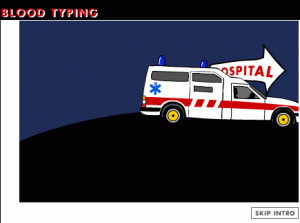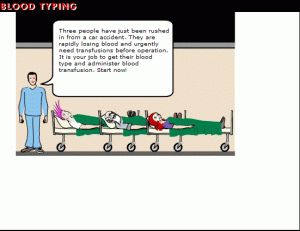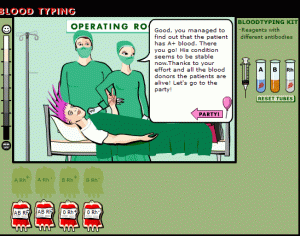Monday, September 24, 2012
Gaming as a Training methodology. (Contd)
Labels: Game Based Learning, Gamification
Thursday, September 20, 2012
Gaming as a Training Methodology
Labels: Game Based Learning, Gamification
Tuesday, January 20, 2009
Why Instructional Designers Should Play Games?
Labels: Design, ELearning, Engaging Content, Game Based Learning, Games, Interactive Content
Has it also happened that you checked out an e-learning course and wondered how the Instructional Designer thought of the visuals, animations and interactivities?
Well, it has happened with me an umpteen number of times. I just keep thinking what gets into people’s heads that they think so creatively.
Designing E-learning course just like movie making requires lot of creativity and innovation. An Instructional Designer has to visualize every screen of an e-learning course and get the graphic designers and programmers in the team to implement it exactly the way he/she visualized.
Doesn’t this remind you of a movie director, who visualizes every scene of a movie and gets his actors to enact it exactly the way he visualized?
The Instructional Designer has to work with the available content, strategize and present the content in such a way that it appears new and interests the learners.
The movie director has to work with common themes and strategize to present the theme in such a fashion that it appears new and interesting to the audience.
Now both the Instructional Designer and the Movie Director have to be really good at visualizing. This is critical both to the movie and the e-learning course.
What do you think a movie director does to improve his visualization skills?
Watch a lot of movies, read novels, etc.
Now what do Instructional Designers to do work on their visualization skills?
Check out other e-learning courses and what else?
Apart from checking out and analyzing e-learning courses, an Instructional Designer must also play a lot of games.
Most people think playing games is a waste of time. But then it is not true for an Instructional Designer at least.
Just as in a game, visuals and interactivities are crucial to an e-learning course too.
So here I list the three reasons why Instructional Designers should play games
Three Reasons Why Instructional Designers Should Play Games
Reason 1: Games have loads of visual strategies
I seriously believe games give you lot of visual strategies much more than any other sources. If you keep playing games, you get an opportunity to see different visual designs and then when you get to design e-learning courses you can use similar ideas.
For example the other day I had gone to Subway and I really hated the sandwich the chef out there made. I thought he was not trained. He did not know the combination of sauces that would make the sandwich taste good.
And then I thought of this as a business case for e-learning. Suppose Subway management decides to go for an e-learning course for all chefs in Subway. Let’s say the management wants something visually appealing, something interactive and engaging.
I could just visualize the following:
Virtual customers, virtual kitchen and virtual ingredients. Customers order a customized sandwich. The chefs drag and drop the ingredients on the sandwich in the right combination depending on customer requirements. For every correct sandwich they gain points. For every wrong sandwich they lose points. The chefs' objective is to gain maximum points by making right sandwiches.
If it is a low budget course, you can use just images and simple animations. If budget is not a constraint, this can be a simulation.
Now this strategy is inspired by games as follows:

You could use this strategy when learners have to learn something by rote.
The bottom line is to identify good strategies while playing games and use in e-learning.
Reason 2: Games show ways in which you can encourage audience participation
Most games require mouse clicks or pressing arrow keys. But then it doesn’t get monotonous because the context and objective of the game is different every time. In the given context the whole act of clicking and pressing gets very interesting and exciting. When you play games you get to know how to use existing interactivity models in different contexts and for different purposes.
For example in the game called Dreams, you simply click to find the differences between the two images as shown below:

The interactivity model used above is simple and basic, yet the objective and context of the game makes the play interesting.
Likewise in the game below, you just have to mouse over the faces that show up. The challenge of the game is to mouse over maximum faces that show up within a time limit.

As you start playing the game you get addicted to it.
The bottom line is when you play games you get to know how to innovate on existing interactivity models.
Reason 3: Games show ways in which you can engage the audience
People love playing games and they get so engrossed that they forget time. Games can just engage anyone and everyone. So what is it in a game that engages people?
The answer is simple. It is the challenge in the game that engages audience. People want to badly reach the objective of the game and this sustains their interest.
I guess e-learning courses must also have this element of challenge which will engage the learners during the learning process and games will give you ideas on how to make your e-learning courses challenging.
With this I end my post here and leave it open for discussion
Please check out some online games here and let me know what you think:
Miniclip
Kongregate
Big Fish Games
Saturday, November 22, 2008
Example of Game-based Learning
Labels: Game Based Learning, Interactive Content
Head over to his blog to see the full post.
Saturday, November 15, 2008
6 Quick Steps to Create a Game Based E-learning Course
Labels: Game Based Learning, Interactive Content, Tips
This post is written by Rupa Rajagopalan
If you play a lot of games, you will definitely be able to identify the standard pattern used.
In games you can skip things and start with the main activity. It is never mandatory to go through a game in a linear fashion.
For example in games, the introduction can be skipped and also the help section can be skipped. Of course you cannot skip levels in a game because that is the challenge in the game. It sustains interest and motivates the gamer to clear each level to see what comes next J However you can play some levels of a game, exit and then start from the same level where you left.
Using game concepts in learning will definitely engage and interest the learner.
Instead of giving lectures and lessons on a subject, try presenting the subject as a problem or an activity to the learner and allow him to solve the problem or participate in the activity. Learning must happen as the learner tries to solve the problem or indulges in the activity.
I will use the game called Blood Typing (http://nobelprize.org/educational_games/medicine/landsteiner/)for illustration purpose.
Now here are the steps to create a game based e-learning course:
Start with a story/scenario
I have played an umpteen number of games and I have seen that every game starts with a story.
The story may be presented as a dialogue between two people or as a sequence of events with no dialogues or may be just visuals and no text.
The Blood Typing game begines with visuals of ambulance rushing to a hospital.

End the story with a problem and invite the learner to solve it
In most games the gamer takes over where the story ends, as in he gets to know the background story and then take charge to solve the problem.
In the Blood Typing game you have a talking head inviting the gamer to get the patient’s blood type and transfuse blood.

Guide the learner
All games help you with the list of controls you use to play the game. Some games have too many controls. There are some other games which require simple mouse clicks.
You can choose how you want the learner to play the game. But make sure that you explain to the learner how he/she has to play the game.
Some games give instructions in the form of written text and some others have a guided tutorial where you play the first level of the game with assistance.
In the Blood Typing game, you have a help section that tells you how to play the game.
Include Incentives and Rewards
Feedback, rewards, incentives motivate gamers to play the game further. I have played many games where you earn points and buy some boosters for the game for the points earned.
In e-learning, rewards will motivate the learner to explore and learn more.
In the Blood Typing game when you correctly transfuse blood, you get words of acknowledgement and encouragement.

Increase the challenge gradually
Every game gets interesting as it proceeds. A game starts at a basic level and proceeds to advanced levels. You master the game as you clear each level.
Coming to e-learning, get the learner started with a basic level activity or problem and increase the difficulty levels as the learner clears each level.
In the Blood Typing game, while treating each patient you have 3 levels of challenge.
Include Trial and Error
If the learner fails to successfully complete a level, he/she must be given another chance or umpteen chances till he/she actually succeeds. If the learner fails at level 2, he should be allowed to play the level again and not start from level 1.
The Blood Typing game allows you to repeat steps to do the blood transfusion right.
Now it is your turn. Have you worked on a game based e-learning course? If so please share your experiences.



